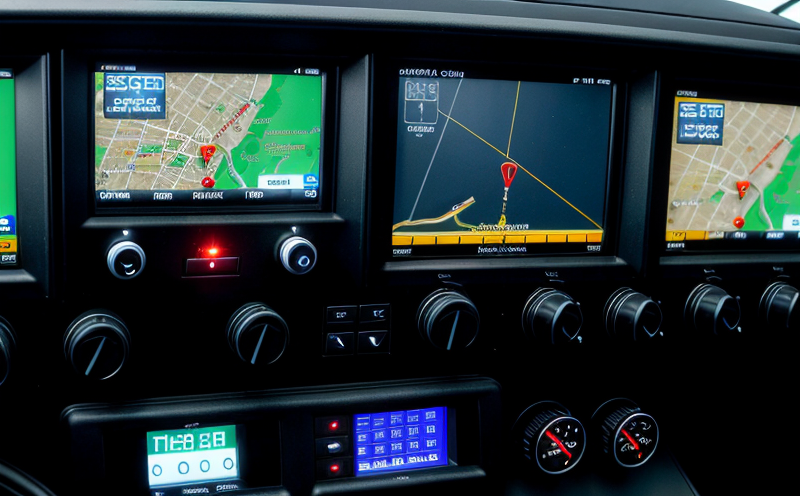ASTM E810 Goniophotometric Testing of Signal Lighting Systems
The ASTM E810 standard is a critical component in ensuring that navigation lighting and signal systems on marine vessels meet the stringent requirements set forth by international maritime organizations. This test evaluates the photometric performance of these systems, particularly focusing on goniophotometry—a method to measure light distribution over a sphere.
The purpose behind ASTM E810 is to ensure that all navigation lights and signal systems used in marine environments are reliable, visible under various weather conditions, and compliant with international standards. This is essential for maritime safety and compliance with regulations set by organizations such as the International Maritime Organization (IMO).
During the testing process, the goniophotometer precisely measures the light distribution of a specimen over 360 degrees in all directions. This allows for accurate assessment of how the lighting behaves under different angles and illuminations, which is crucial for its visibility to other vessels and personnel.
The test involves several key steps: first, the specimen (the navigation or signal light) is mounted onto a goniophotometer. The goniophotometer then rotates the specimen through all possible angular positions in three planes—horizontal, vertical, and rotational—to simulate real-world conditions. Light intensity and color are measured at every point.
The results of this testing provide critical data on how well the light will perform in various environmental conditions, including fog, rain, and extreme temperatures, which can significantly affect visibility. This information is vital for ensuring that marine navigation equipment meets not only ASTM E810 standards but also broader international regulations such as IMO guidelines.
Compliance with ASTM E810 is crucial for quality assurance in the marine industry, ensuring that all equipment used on ships and other maritime vessels adheres to the highest safety standards. This testing process helps prevent accidents caused by poor visibility or non-compliant lighting systems, thereby enhancing overall maritime safety.
For R&D engineers and compliance officers involved in the development and certification of marine navigation lights, understanding ASTM E810 is essential for meeting regulatory requirements and ensuring product quality. The test results provide valuable insights into how different designs perform under various conditions, aiding in iterative improvements and innovations.
Why It Matters
The importance of ASTM E810 cannot be overstated, especially given the critical role that navigation lighting plays in maritime safety. Poorly performing or non-compliant lights can lead to accidents and fatalities on the high seas. By ensuring that all signal systems meet the rigorous standards set by this test, we contribute significantly to enhancing maritime safety.
The goniophotometric testing process provides a comprehensive evaluation of light performance under a wide range of conditions. This is particularly important because the marine environment can be harsh and unpredictable, with varying weather patterns and lighting conditions that affect visibility. The test ensures that lights are not only bright enough to be seen but also that they are distributed in such a way that they can be clearly identified from all angles.
From an R&D perspective, this testing helps identify potential design flaws or performance issues early on in the development process. Engineers can use the detailed data provided by ASTM E810 to refine designs and improve overall product quality. This not only enhances safety but also ensures that products are reliable and consistent with international standards.
For procurement professionals, ensuring compliance with ASTM E810 is essential when selecting suppliers for marine navigation equipment. Non-compliance can lead to costly penalties and reputational damage. By adhering to these standards, organizations can maintain a high level of safety and reliability across their fleet.
Industry Applications
| Application Area | Description |
|---|---|
| Navigational Lighting Systems | This includes all lights used for navigation, such as running lights, anchor lights, and signal lights. These systems must meet the specific requirements of ASTM E810 to ensure they are visible from all angles under various conditions. |
| Signal Lights | These are used for communication between vessels or with shore-based facilities. They include flashing lights, strobes, and other signaling devices that must be clearly visible to ensure safe navigation. |
| Masthead Lights | Critical for identifying the size and type of vessel, these lights are an essential part of any marine vessel’s lighting system. They too must comply with ASTM E810 standards to ensure visibility in all conditions. |
| Emergency Lights | These provide critical illumination during emergencies and must be tested for performance under various angles to ensure they are visible when needed most. |
International Acceptance and Recognition
- The International Maritime Organization (IMO) recognizes ASTM E810 as a standard for evaluating navigation lights.
- This test is widely accepted by maritime authorities around the world, ensuring that any equipment certified to this standard will be recognized globally.
- ASTM E810 compliance is required for the certification of navigation and signaling lights in many countries, including those that are members of the IMO.
- The test results from ASTM E810 are often used as a benchmark for quality assurance in the marine industry. Compliance with this standard adds significant value to products, making them more desirable among buyers.
- Many maritime insurance companies require compliance with ASTM E810 when assessing risks associated with vessels and their equipment. This can influence premiums and coverage terms.





